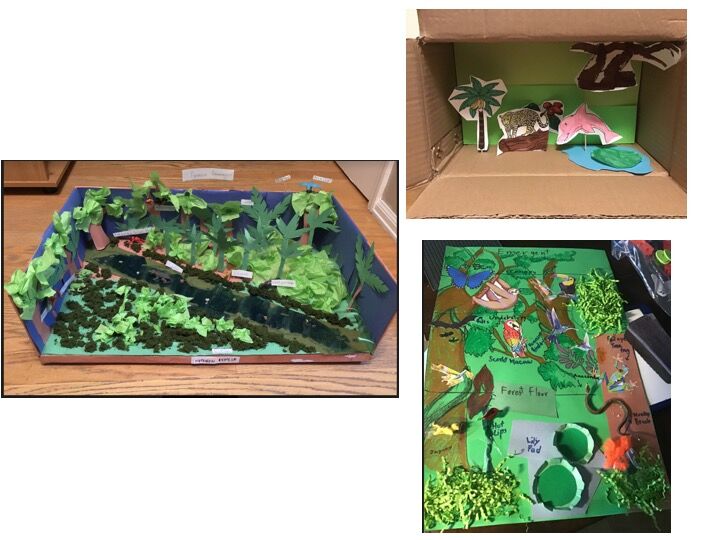Why do people create buildings? Why do buildings all over the world look different and how does culture play a role in design? These are questions we hope students will be able to answer at the culmination of our architecture unit.
We started with an exploration of architecture. Students created a "Me Monument" that symbolizes who we are. As we start to learn more about each other, we can teach one another about what is important to us through the design of our monument. We continued our exploration with some constraints. We needed to pick a location in nature that we wanted to create a building. We had to think about the location and what we might want to take into consideration when designing for that environment. Nature affects design, and design affects nature.
We learned more about the elements of art and principles of design, and then we continued to explore architecture. Students learned some technical terms and received a glossary or architectural features. Students had to find famous buildings that showed certain architectural features. See if you recognize the famous building here in the Ladue School District shown as an example of a flying buttress! Then, we learned about some particular styles of architecture including the ancient Greek style, and we explored designing with columns and pediments.
We also learned about the engineering and architecture of the Romans and created either a Roman bridge or aqueduct.
Click here to see actual footage of Joejoe's working aqueduct!
Then, we explored some architecture on the continent of Asia. Students were able to choose a place to visit in China, Japan, the Middle East, or India, and pretend to visit a famous building there. We wrote a postcard to a friend including a drawing of the famous building and a message that included architectural features of the building.
This past week, we explored some architecture on the continent of Africa. Like Asia, Africa is vast! There are 54 countries on the continent with many different architectural styles, features, and cultural influences. For this activity, we are focusing on one particular style, the Ndebele House in South Africa. Students are creating artistic designs in the style of the Ndebele painting, and we are creating a house in our choice of a rectangular prism base, cube base, or cylinder base.
We are having so much fun with this unit! Students are researching a style of architecture that they are interested in learning more about and will create a presentation to teach others about the style and architectural features. We will continue to update you throughout the year. Thank you for taking the time to read this post.































